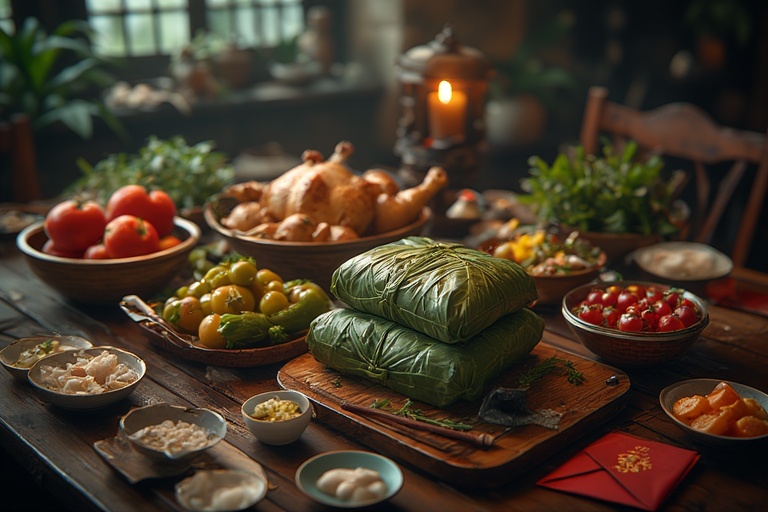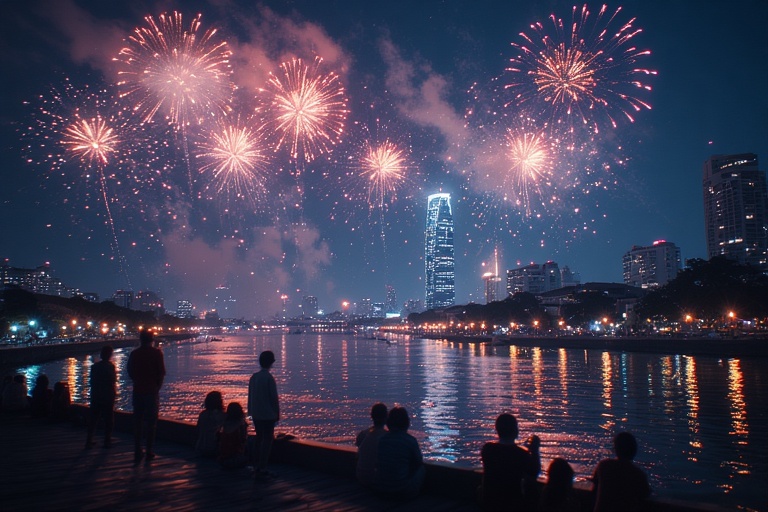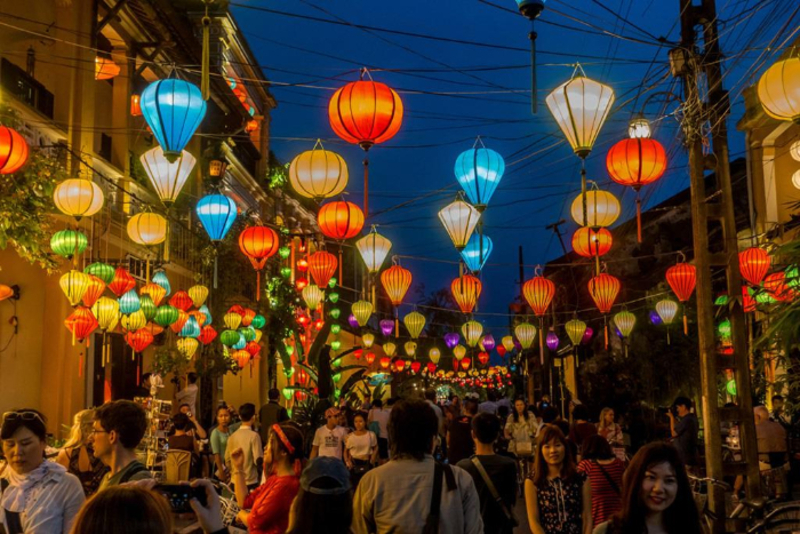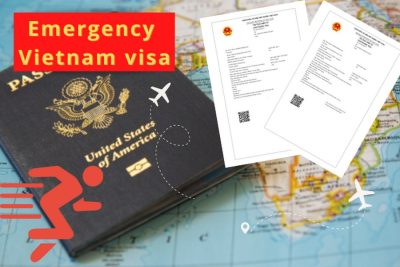Thinking of visiting during the Vietnam Tet Lunar New Year? This is the most meaningful celebration in Vietnam, and here’s your complete guide to enjoying it.

Thinking about visiting Vietnam during Tết Nguyên Đán—Vietnam’s Lunar New Year? Great choice. Tết is the country’s most meaningful celebration: a season of fresh starts, family reunions, ancestral gratitude, and dazzling blooms from Hanoi to the Mekong. It’s magical—and also unlike any other week of the year for travelers. This guide blends the best of four page-one articles into one polished, practical playbook, then adds a fresh angle you won’t find elsewhere: a day-by-day Tết travel timeline plus a visa + logistics checklist tailored for holiday closures. You’ll also see exactly how VietnamVisaExpress.com can remove the visa guesswork—especially if your plans are last-minute.
1) What Makes Vietnam Tet Lunar New Year Unique
What Tết is
Tết marks the first day of the lunar year and the arrival of spring—especially palpable in the cooler North. Historically, it coincided with a new cycle of wet-rice cultivation in the Red River Delta; today, it’s a national reset. Homes are scrubbed, debts settled, wardrobes refreshed, and spirits lifted toward luck and prosperity. Red (for protection and good fortune) splashes across doorways, markets, altars, and those famous lì xì red envelopes.
Shared roots, uniquely Vietnamese Yes, Tết and Chinese New Year share a family resemblance, but Vietnam made it its own through legends and rituals:
Yes, Tết and Chinese New Year share a family resemblance, but Vietnam made it its own through legends and rituals:
Kitchen Gods (Táo Quân): On the 23rd day of the last lunar month, families bid farewell to the Kitchen Gods—who ride carp to heaven to report on the household’s year—by offering prayers and, in the North, releasing live carp into rivers.
Five-Fruit Tray (Mâm Ngũ Quả): An altar centerpiece symbolizing gratitude and hopes for wealth, health, and harmony. Fruits vary regionally but always carry meaning.
Heaven & Earth in a Cake: The origin story of bánh chưng (square, Earth) and bánh dày (round, sky) is quintessentially Vietnamese: humility, agriculture, and filial devotion wrapped in fragrant leaves.
How the country feels
The energy crescendos in the two weeks before Tết: flower streets, new clothes, haircuts, and kumquat trees tied to motorbikes bobbing through traffic like glowing lanterns on wheels. Then—switch—cities fall quiet the first few days of the new year as people retreat into family time. You’ll see altars with offerings (fruit, tea, boiled chicken), gentle incense smoke, and heartfelt greetings—“Chúc Mừng Năm Mới!”
2) Dates, Duration & Regional Flavors (North, Central, South)
When is Tết?
Dates shift each year with the lunar calendar, usually late January to mid-February. As reference points:
2026: Tết falls on February 17 (public holidays commonly span ~7 days).
2027: Tết falls on February 6.
How long does it “really” last?
Official holidays are about a week, but the spirit of Tết runs longer. Expect peak bustle a week before New Year’s Day and a gradual reopening over the 3–7 days after. 
What varies by region
Hanoi & the North: Chilly air, peach blossoms (hoa đào), and the classic Northern Tết table: bánh chưng, nem (fried spring rolls), and a whole boiled chicken. Wander Quảng Bá Flower Market and the Old Quarter on Tết Eve—altars line alleys, and fireworks paint the sky at midnight.
Central Vietnam (Huế, Đà Nẵng, Hội An): Lanterns and temple rites show off the country’s imperial and heritage heart. Hội An’s lantern glow during Tết is pure poetry.
Ho Chi Minh City & the South: Warm nights, yellow ochna blossoms (hoa mai), and a different Tết menu—bánh tét, caramelized pork, bitter melon soup. Don’t miss Nguyễn Huệ Flower Street in District 1; it’s the country’s largest floral showcase.
3) Traveling During Vietnam Tet Lunar New Year: What to Expect
Most guides tell you what Tết is. Here’s what to do, day by day—our unique add-on so you can squeeze every drop out of the season.

Close-up of a family table with traditional Tet food: square bánh chưng wrapped in green leaves, boiled chicken, pickled vegetables, candied fruits, red envelopes on the side
D-7 to D-3 (One week to three days before New Year’s Day)
Book everything (flights, intercity trains/buses, and hotels). This is peak domestic travel.
Shop the flower markets: Hanoi’s Quảng Bá, Saigon’s Nguyễn Huệ and District 5 feel like living postcards.
Museum days now: Some cultural sites close for the first 1–3 days of Tết; tick off museums, mausoleums, and exhibition houses before the holiday starts.
Street food safari: Stalls will shutter during Tết. Load up now on bowls of bún chả and bún bò Huế.
D-2 to D-1 (Tết Eve buildup)
Soak in rituals: Look for curbside altars and Kitchen-God-themed offerings.
Pick your fireworks vantage point: Riverside promenades and tall decks (e.g., in Saigon) get crowded—arrive early.
D-Day (New Year’s Day)
Wander quiet streets by bicycle or on foot. It’s your once-a-year chance to hear birds in Saigon.
Mind the etiquette of “first footing”: Don’t enter a Vietnamese home uninvited on Day 1—hosts often choose their first visitor for good luck.
Temples & pagodas: Watch gentle ceremonies and offer incense respectfully.
D+1 to D+3
Hotel dining > street stalls: Many eateries remain closed; hotel kitchens carry the torch with special menus.
Parks & pagodas: Tao Đàn Park (HCMC) and city temples host cultural performances and prayer.
D+4 to D+7
Reopenings ramp up: Museums, shops, and markets return.
Day trips resume: Mekong Delta floating markets wake back up; beaches feel lively again.
Pro move if you arrive mid-Tết: Pivot to walkable neighborhoods, hotel dining, pagodas, and parks, then slot museums and foodie crawls into D+4 onward.
4) The Tết Table & Traveller Etiquette (Eat Well, Do Right)

Vietnamese family in traditional áo dài, grandparents handing red envelopes (lì xì) to smiling children
What you’ll see (and taste):
Bánh chưng (North) / bánh tét (South): Sticky rice, mung bean, pork—savory, symbolic, and satisfying.
Thịt kho trứng: Caramelized pork with braised eggs; comforting and celebratory.
Dưa món: Tangy pickled veg that cuts the richness.
Candied fruits and tea for guests; watermelons for abundance.
Lì xì (lucky money):
Crisp bills in red envelopes go to children and elders. If you’re gifted one, accept with both hands and a smile. If you gift, use new, clean notes and avoid unlucky amounts.
A few do’s & don’ts:
Do greet people with “Chúc Mừng Năm Mới.”
Don’t bargain hard on Day 1—many consider it bad luck to start the year with haggling.
Do dress neatly for temples; shoulders and knees covered is respectful.
Don’t drop by homes uninvited on Day 1; wait to be welcomed.
5) What’s Open, What’s Closed (And How to Pivot Like a Pro)

Night view of fireworks exploding over the Saigon River, Landmark 81 skyscraper in the background, people watching from riverside promenade, realistic reflections on water
Transport: The domestic rush is real. Book flights, trains, and buses early for the week before and after Tết. Tickets sell out; prices can surge.
Accommodation: Most hotels stay open; some add holiday surcharges. Book early for the best range and rates.
Sightseeing: Expect some museums/mausoleums/exhibition halls to close for the first 1–3 days. Plan around it.
Restaurants & shops: Many family-run spots close; hotel restaurants cover the gap with special Tết menus.
Banks & admin: Closed. Swap currency beforehand or use hotel exchange (rates may be less favorable).
Mekong floating markets: Often paused during the first days—schedule them for D+4 onward.
Silver linings:
Empty avenues in Hanoi and Saigon (bring a camera).
Lantern-lit evenings in Hội An without the usual bustle.
Beach towns (e.g., Phú Quốc) that feel yours alone.
6) Visa & Logistics for Vietnam Tet Lunar New Year
Holiday closures can complicate a trip that hinges on timing. Here’s how to make visas, entry, and comms bulletproof during Tết.
Your do-not-skip list
Visa timing: Standard e-visa processing typically runs ~1–3 business days (outside peak/closures). Around Tết, add buffer—or choose an urgent service.
Urgent/last-minute options: If your travel is imminent, VietnamVisaExpress.com offers fast-track approvals (often 1–4 hours) and same-day solutions in many cases. That’s especially useful when government offices observe extended holidays and you still need clearance to board.
Entry points & flights: Confirm your arrival airport matches what’s on your visa approval. During Tết, stick to major airports (Hanoi, HCMC, Đà Nẵng) where operations are most robust.
Proof of onward travel & accommodation: Airlines sometimes check these more strictly during peak periods—have confirmations handy.
Payments: Carry a mix of cash and cards; ATMs can be busy or out in remote pockets.
Connectivity: Get an eSIM or airport SIM on arrival; some standalone mobile shops close during the first days of Tết.
Medical & meds: Pack basics; neighborhood pharmacies may be closed for a day or two.
How VietnamVisaExpress.com helps (especially at Tết):
Speed when it matters: Emergency 1–4 hour visa options for genuine last-minute cases.
After-hours responsiveness: Holiday and off-clock travel doesn’t scare them—WhatsApp/Hotline support guides you step-by-step.
Form-fill concierge: They’ll sanity-check your application and documents to prevent painful re-submissions (a risk when offices reopen).
Itinerary-aware advice: Which entry airport is safest during Tết? How much layover buffer to build? They’ll help plan the practical details that generic guides miss.
Bottom line: If your trip brushes up against Tết (or you’re prone to spontaneous flights), looping VietnamVisaExpress.com into your plan drastically reduces risk—and stress.
7) Where to Celebrate: City-by-City Highlights

Hội An ancient town street at night during Tet, glowing silk lanterns in many colors, reflections in water, people strolling in áo dài
Hanoi
Peach blossoms & altars: Stroll the Old Quarter on Tết Eve; look for curbside altars with fruit and boiled chicken.
Flower markets: Quảng Bá near West Lake is peak Northern Tết magic.
Midnight fireworks: Bundle up; it’s chilly but unforgettable.
Ho Chi Minh City (Saigon)
Nguyễn Huệ Flower Street: The country’s most spectacular floral show.
Riverside fireworks: Popular viewing near the Saigon River; arrive early.
Chinatown (District 5): Lion dances, street performances, bustling festive stalls.
Huế, Đà Nẵng & Hội An
Imperial ceremonies: Huế’s temples and tombs are solemn and photogenic.
Lantern romance: Hội An’s Tết evenings glow with color and calm.
Phú Quốc & the beaches
Sun, space, serenity: Ideal during the quieter first days; many resorts run special programs.
Sample Tết Itineraries (Pick Your Window)
A) Arrive 3–4 days before Tết (Best balance)
D-4: Land in HCMC, secure SIM, exchange cash, Nguyễn Huệ Flower Street.
D-3: Morning museum circuit; afternoon coffee crawl; book your fireworks spot.
D-2: Fly to Hội An or Huế; lantern walk and riverside dinner.
D-1: Temple visit; light day; Tết Eve countdown.
D+1 to D+2: Quiet city walks, pagodas, hotel dining.
D+3 onward: Resume foodie missions and day trips; head to a beach.
B) Land on Tết Eve (High drama, fewer open doors)
D-1/Tết Eve: Check-in, fireworks, late supper at your hotel.
D+1: Sunrise walk, pagoda visits, afternoon rest.
D+2 to D+3: Parks, photography, hotel experiences.
D+4 onward: Museums reopen; take the Mekong or Cu Chi day trips.
C) Arrive two days after Tết (Easier logistics)
D+2: City orientation, light shopping.
D+3 to D+5: Full sightseeing; restaurants back in stride.
D+6: Domestic hop to Hà Nội or Đà Nẵng; catch the tail end of festivities.
Quick Answers (FAQs)
Is Vietnam “closed” during Tết?
Not exactly. Many family-run places close for the first few days, but hotels, high-end restaurants, and major attractions in big cities usually remain open (with adjusted hours).
Is Tết a good time to visit?
Absolutely—if you embrace the rhythm. Before Tết: energetic markets and flower shows. During Tết: peaceful streets and temple moments. After Tết: the city yawns awake and you get the best of both worlds.
What should I book early?
Everything transport-related (domestic flights, trains, intercity buses) plus hotels if you want specific neighborhoods or views.
Any etiquette traps?
Don’t enter homes uninvited on Day 1; be gentle about bargaining; dress modestly in temples; and learn “Chúc Mừng Năm Mới.”
How VietnamVisaExpress.com Fits Into Your Plan
WhatsApp your questions for an immediate response: Click Here to Start a Conversation
If you’re organized: Apply early and treat VVE as your “quiet insurance policy” if plans shift or approvals lag near holiday hours.
If you’re spontaneous: Use VVE’s urgent 1–4 hour service for true last-minute travel.
If you’re in-between: Ask VVE to review your docs, confirm entry points, and advise buffers for flights around Tết. One WhatsApp thread can save days of uncertainty.
Traveler-friendly flow with VVE
Share your travel dates and arrival airport.
VVE suggests the right visa type and timing (standard vs urgent).
Upload clean scans (passport, photo) and confirm details.
Receive approval and airline-ready guidance (what to print, what to show).
Land confident, focus on Tết—not paperwork.
Conclusion: Why Vietnam Tet Lunar New Year is Unforgettable
Tết isn’t just a date on the calendar—it’s Vietnam’s heartbeat. In the lead-up, you’ll feel the country vibrating with anticipation; during the first days, it exhales into quiet gratitude; then life resumes with a brighter, luck-tinted lens. With smart timing, a flexible plan, and visa logistics handled (hello, VietnamVisaExpress.com), you can experience the whole arc: the flowers, the food, the fireworks, the stillness, and the sweet return to everyday joy.
Chúc Mừng Năm Mới—may your Lunar New Year in Vietnam be generous with wonder, easy on logistics, and rich in stories you’ll tell for years.



